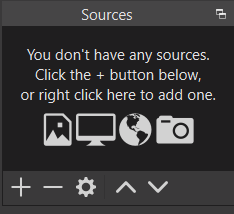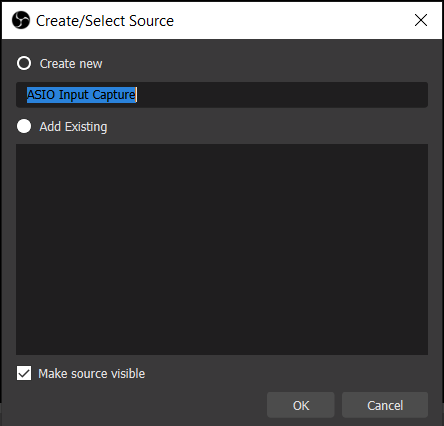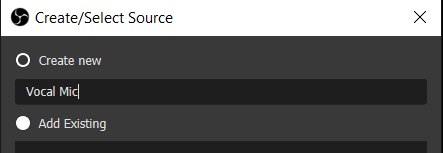Introduction
This is a brief explanation of how to use a multi-channel audio device, such as a Focusrite Scarlett Solo, or a Behringer UMC204HD (as in my case) with OBS on Windows to support streaming to Zoom or other video conferencing applications.
Note that this isn’t a tutorial on using OBS or using OBS for streaming to Zoom.
This posts focuses on getting the audio interface set up with OBS so that you can perform mixing between the two inputs, and apply separate plugins to those inputs.
@tobyjenner has done a great write up on how to achieve this by using a DAW to front OBS in this post.
This is an alternative approach for those who don’t want or need such a complex setup.
Overview
The way OBS handles audio inputs varies significantly on different platforms, largely due to the differences in the audio subsystems on those platforms.
For Windows, the standard audio subsystem is the “WDM” subsystem which is used by most desktop applications. This, however, is not very good at “pro-audio” applications. In particular, it’s not very good with multi-channel audio interfaces which aren’t surround sound systems. In other words, where you wat to treat the inputs and outputs as individual channels, rather than as a single multi-channel system.
As an example, a typically 2-channel audio interface like the Focusrite Scarlett Solo will show up as a single stereo device on Windows, which is not what we want at all.
The answer to this is to use ASIO. ASIO is an alternative driver subsystem that is used by nearly all music and media applications, such as DAWs and software synths. ASIO supports “pro-audio” applications in a number of ways, but the key one for this application is that it allows us to individually select inputs from a multi-channel audio interface.
Using ASIO with OBS
Install ASIO
First of all you need to make sure you have the ASIO drivers for your audio interface installed. Your manufacturer will normally provide these as a download for your chosen device.
In my case, I have a Behringer UCM204HD and I downloaded and installed the UCM drivers from their website.
Install OBS
Of course, you will need OBS installed. If you haven’t got it already, it can be downloaded and installed from the OBS Project website.
Install ASIO-OBS
This is a plugin for Windows OBS which supports the use of ASIO audio sources. The installation instructions are in the ASIO-OBS wiki. I used release version v3.10 with the instructions at https://github.com/Andersama/obs-asio/wiki/1.-Installation-and-Usage-(version-2-and-3) but check the Wiki for the latest release instructions.
The release installers can be found at Releases · Andersama/obs-asio · GitHub
The installation is very simple: download the installer and run it to install the plugin.
Configure Audio sources
After installing the plugin and launching OBS, you should add audio inputs for each channel you wish to use. In the example here, I’m assuming that channel 1 is a microphone, and channel 2 is for a guitar (which may be a second microphone, an electro-acoustic pickup, or the line output from an amp or multifx system).
When you launch OBS, there should be a section of the OBS window called “Sources”:

From here you can add audio and video sources to build your stream presentation. To add a channel from your audio interface, click the “+” button which will pop up a list to select which type of source you want to add:
You should have “ASIO Input Capture” on this list. Click on it to add a ASIO input source. This will pop up a window as follows:

Make sure the “Create new” button is selected (assuming this is the first time you are adding the device to OBS), name your input device accordingly (I called mine “Vocal Mic”) and click OK to add it:

A second window will then pop up asking you to select the audio device and channel:
Select your audio device or driver (in my case it’s “UMC ASIO Driver”), select “Mono” as the source (assuming a standard Mic or other single-channel source), and then select which channel you want for this audio source, and click “OK”.
This should then show up in the Sources list as well as the audio mixer:
You can then add the second input as a new source in the same way, selecting the second channel. In my case, i called this “Guitar”:
You can then easily control the relative levels of each input using the sliders on the audio mixer.
Using Plugins
OBS allows the use of standard VST 2 plugins. These can be applied individually to each track so that you could have, for example, some vocal plugins on the mic channel, and a guitar amp simulator plugin on the guitar channel.
NOTE: Most normal VST plugins should work, but the Waves plugins will not work directly without some additional work. For simplicity, it’s probably best to avoid using these plugins
To add a plugin for an input, select the cog icon next to the input you wish to add the plug to on the audio mixer. This will pop up a menu. Select “Filters” from this menu:
This will pop up a new window allowing you to add audio plugins. Click the “+” button at the bottom and a menu will pop up asking what sort of filter you want:
OBS comes with a bunch of basic audio filters built-in, such as compression. If you click on the VST 2.x Plug-in item, it will pop up a window asking you to name the filter.
Enter a meaningful name here, like “Compressor” or “Vocal Plugin” and click on OK. You’ll then get a window allowing you to select and configure the plugins:
The drop down will list the plugins on your system. When you have added the plugin as a filter, you can select the “Open Plug-in Interface” button to configure the plugin.
If you have several plugins on an input, you can also use this window to manage which order they are in.
For more information on using audio plugins on OBS for streaming, see this video:
Stream to Zoom
As I said, this post isn’t really a tutorial on how to connect OBS to Zoom, but here’s some basic information.
In order to stream to Zoom, or other tools, you need a “Virtual Audio Cable”. This can be done with VB-Cable Virtual Audio Device. On their website, they have various applications. The ones needed for this are Virtual Cables A and B. The download requests a donation towards developing and maintaining the application.
The following video is a great guide to installing and configuring this with OBS and Zoom:
Cheers,
Keith











